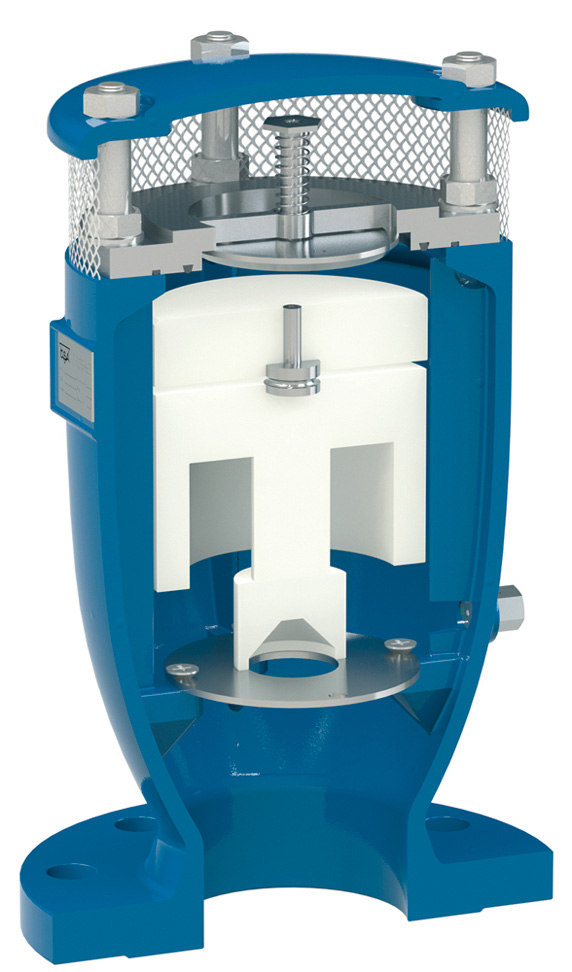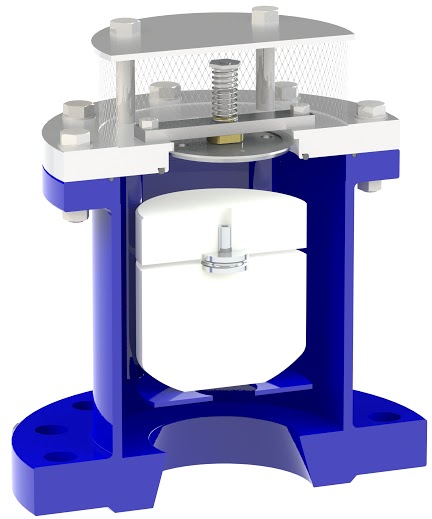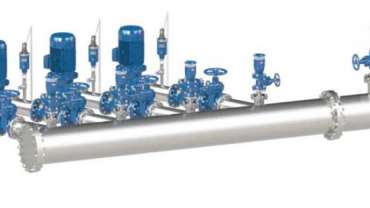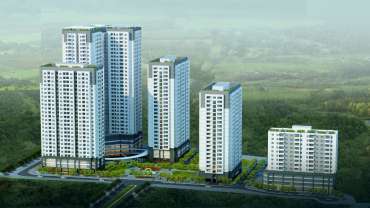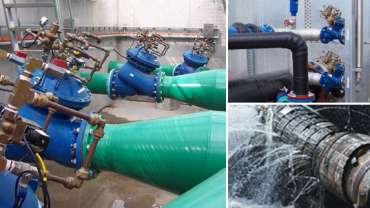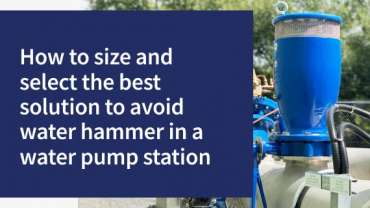Water hammer prevention in pumping stations under power failure conditions.
Play PodcastIn episode six of Controlling Water, we’re joined by Colin Kirkland, a mechanical engineer at Bermad, to talk about water hammer prevention techniques in pumping stations under power failure conditions. Tune in to learn about the importance of forward planning and surge analysis to minimise these conditions from occurring. Throughout the episode, Colin also explains the integral role Bermad’s innovative product range plays in these prevention techniques.
Transcript
| Sarah | Hello and welcome to Controlling Water, a space for us to talk valves, water meters, and interesting insights about the water industry. Each episode we’re joined in conversation by industry professionals that specialize in all things valves, meters, and best practice knowledge in the water industry. We are here with Colin Kirkland from Bermad Water Technologies, who is the air valve product manager in Australia.
With more than 30 years experience in the industry, Colin joins us today to talk about water hammer prevention in pumping stations under power failure conditions. Previously, we’ve talked about the methods of controlling water hammer during regular pump starts and shut downs, and some of the efficient solutions on offer. In today’s episode, we’re going to dive into what happens in the event of a power failure at a pump station, and what are the consequences? Colin, you’re an expert in this area. Could you elaborate on what a power failure looks like and what the consequences might be. |
| Colin | So in previous episodes Sarah, we’ve discussed minimizing the water hammer at the pump stations by using motorized valves to open and close slowly to avoid that.
The big issue with a power outage at a pump station is that if we think about typical pump stations, they’re used for water supply, irrigation, mining in buildings, they all play a critical role. And if the whole engineering behind the pump station, the pipeline and everything else, has to be safe and fit for purpose under all operating conditions. And that’s under normal pump starts normal shut down, but also in the event of power failure or instant shut down. The net effect is if there’s no control when the pump basically just stops, that water has been pumping up the hill or the building and has a lot of energy. And when we stop instantly, that energy is going to come racing back towards the pump station and creates a lot of water hammer. I want to share one real story from many years ago when I was called to go to a pumping station in New South Wales and they had serious water hammer at this pump station. The operators took me into pump station building and they were explaining where the issue was and they asked me, and they said, Colin, before we demonstrate the water hammer, can we just move over to the side? And I said, okay. So they turned the pump off and there was substantial water hammer. It came down and made a lot of noise. And I asked them, I said, why did you ask me to move? And they said, well, in the past, the water hammer has been so severe that when the check valve closed, one of the arms of the valves came off and went through the back of the building where you were standing. So this was a real situation. So it’s not just about protecting the asset, the pump station, and everything else, but this was a rare event that could have had terrible consequences. I was awfully glad he did ask me to move to one side. |
| Sarah | Yes, definitely. |
| Colin | So, on a serious note, it can be quite terrifying if you’re in a very big pump station and this happens, because there’s a lot of noise held with it. The pipeline and the pump stations are subject to a lot of excessive pressure, you know, where it moves pumps off their footings, and it stresses the pipe and stresses all the components. So, the thing is when you’re designing something like this, you have to take into consideration what happens in a power outage.
If that means that the pressure is going to double or triple, then I have to rate all of the components and the pipe to a much higher degree of safety. And that’s usually not terribly practical. So what a lot of the designers and engineers will look at and say, well, okay, what do we do in the event of power failure? And what are the things we need to do to make sure it’s going to be safe? |
| Sarah | And so, what are the net effects if the power does fail? I’m guessing that this is a major concern for most pumping stations. |
| Colin | Yes, it is. So the key thing here is that on a sudden power dropout, we’re going to see substantial surges, water hammer and noise. And each pump will have what we call it’s own inertia, which means that when the pump stops through a power outage, it’s not going to stop instantly. It may continue to rotate for a short period. So we get some sort of gradual reduction, depending on the pump design.
But the bottom line is that we’re going to experience water hammer here and we have to make sure we design it fit for purpose. Typically the stress that this is going to provide to everything is at its highest level. So the engineering has to be done really well and accurately, so we can really plan for what we need to do next. |
| Sarah | Of course. Colin, what would you say are some of the things that a designer might need to consider to help mitigate the consequences that occur with such a rare event? |
| Colin | It’s a really good question Sarah, because it’s all about planning. At Bermad, we have a specific software that we can enter in a lot of the pipeline design characteristics, and the pump stations. We can actually plan for this by modeling what the effects are going to be like. So we can see if we stop the pump at five seconds, we’ll expect this result. If we stop it in 4, 3, 2, and we’ll see what the results are going to be.
So the best advice I could give everyone is to get some good reporting done and get some analytics done on what you know is going to happen. Now, most of the software today really has many, many years experience. We have limited software that gives us a very, very good snapshot. And I should stress that what we provide at BWT is not a full surge analysis, but it’s a very good and fairly accurate snapshot of what we think we’re going to see. So the best advice is to get good information before this happens, so we can plan for the right products. |
| Sarah | And so, it sounds like this is something that Bermad supply to potential users. Is it very complicated? |
| Colin | It’s not very complicated. There’s basically a series of around 8-10 questions that we’ll ask people who are looking to use it. The sort of things are basically about the pump speed, their motor speed, the pipeline material, its length, and its pressure rating. There’s several things that we would ask, but once we gather that information, we can then see what the potential surge will look like.
And there really is a multitude of different options that we can use to try and mitigate that. So it’s about getting the right information. We know the right questions to ask, which is the important thing. |
| Sarah | Let’s take a short break. If you have any questions that you would like answered during this podcast, feel free to get in touch with us through our website www.bermad.com.au or send us an email info.au@bermad.com and Colin will be sure to answer them. Now, back to the show.
And so, say you received this surge report. What are the solutions that you can offer to reduce the effects of the water hammer? |
| Colin | So what we do is we basically analyze the results to start with. There are solutions that can vary from very inexpensive to hugely expensive infrastructure to cope with this. So there’s around three to four key solutions that we can offer. The first one is when we look at this surge report, what we’re looking for is, we’re looking to understand how fast the return surge is going to come back to the pump station and what timeframe that’s going to be.
We’re also looking very clearly at what the pressure is going to be at the pump station too as well. In many instances, if we’ve got a pump station that’s not generating a lot of pressure and it’s in relatively flat country; we can see column separation and column separation is when the pump stops, we see the pressure in the maine dropping to atmospheric pressure. So if we had an air release valve there at that point, that’s where the air valve is going to allow large volumes of air to be drawn into the pipeline. And then as the column comes back to the pump station, that will release the air. If we have column separation and we can see that in the report, the very simple, easy and effective way to do is with what we call an anti-slam air release valve. We have spoken about these in previous episodes being used on the pipeline, but they can also be used at the pump station too. And what the anti-slam air valve does really simply and easily without any use of energy or power is when that pump stops, and the pressure drops to zero, large volumes of air are being drawn into the pipeline. So we now have a large bubble of air inside the pipe. And as this column is coming back towards the pump station, that air bubble now wants to release very quickly. An anti-slam air valve lets it out at a very slow controlled rate, so we’re actually utilizing the air that’s been drawn into the pipe to come back out of the pipe very slowly. And so they were basically releasing at a very slow controlled rate. It’s enormously effective, and has been proven in a multitude of applications over many years. And importantly, it can be modeled in software and everything else to ensure that it’s going to be fit for purpose and it’s safe. So anti-slam air valves are a very good option only if there’s column separation. |
| Sarah | Right, so if there’s no column separation but the pressure remains positive, is there an alternative solution? |
| Colin | Yes, so anti-slam air valves in a location like that is going to have no effect. So what we’re going to experience in those conditions then, is when the pump stops, exactly as you said, that the pressure is going to drop, but it’s still going to stay in a positive mode. But we’re going to see is that when that water column comes back towards the pump station, and it’s going to compress all that energy, we’re going to see a rapid spike there.
So from our perspective, there’s three key solutions that we can offer. One of them is called a fast-acting pressure relief valve. So for example, if we had a pipeline that was very short, and only 800 meters long, and we were experiencing this return wave to come back to us within 0.8 of a second; then we have very fast-acting relief valves that will instantly dissipate that energy as it rises above the normal condition. For us, that’s the VRCA direct-acting relief valve, which is simple, very effective and works in that sort of condition very well. If it were a longer pipeline and we were experiencing maybe a return wave that came back in 3, 4, 5 seconds; we may use a valve called a surge anticipating valve. Now this is technology, which we’ve had at Bermad for many years. It’s really proven and very effective, and what it basically does, is that it anticipates this wave coming back, being a surge-anticipating valve. So it actually opens when we see a low pressure wave, and then as the return wave comes back, that energy dissipates through the relief valve, and then the valve shuts slowly. It’s called a surge-anticipating valve, so there’s many ways we can configure it, but it’s very safe. It’s basically like a hydraulic fuse in the pipeline, basically, that’s just going to make sure that we’re going to anticipate that wave coming back, we’re going to release it, and we’re going to slowly close at a very controlled rate to make sure that it doesn’t regenerate a secondary wave. And it’s a very proven feature of how to overcome that issue. The third way could just be that we’re experiencing a slight pressure rise, and it’s going to come back very slowly because the pipe may be PVC or poly, so the wave might come back to the pump station over 60-70 seconds. And then we’ve got the ability to put in a standard pressure relief valve, which for us, will open as much as it has to, to get rid of that energy and shut down really slowly and gently just to dampen out that surge. So for us, there are 3-4 key solutions that are reasonably inexpensive. We know they work factually and that they can be modeled and put into software to anticipate the effects of how they’re going to work. And of course it’s all about the experience and knowing how to design them and put them in to as well. So these are some very proven solutions for water hammer that we’ve certainly used. |
| Sarah | Definitely. So if I understand, this hydraulic valve that you were speaking of is not connected to electricity, nor does it have a battery backup supply. Is that correct? |
| Colin | Absolutely. One of the key things that’s really important here, Sarah, is that we’re assuming that there’s been a lightning strike, a power outage and there’s no power. We want a hydraulic solution that’s going to work specifically under those condition.
Now, in some very complicated pipelines, we sometimes actually do put a battery backup and we’ll also put a solenoid on the valve. We do this if we know we’re going to see secondary waves that come back, because sometimes in very complex pipelines, this search is not a simple quick-fix answer, it can be quite complicated. But in general, we don’t require any backup of power. So it’s generally a purely a hydraulic solution from our perspective. |
| Sarah | Fantastic. Colin, it appears the surge anticipation valve is a flexible and efficient design that can reduce the effect of water hammer during every pump station condition. Is this technology proven and reliable for engineers and designers to consider? |
| Colin | Definitely Sarah. This technology has been around for a long time. For many, many years, I’ve worked on surge anticipating valves and pressure relief valves. And the most important thing with this is that it’s not just about opening up a catalogue and suggesting a product here. It’s understanding what the surge report really means. And if you really understand the extent of and the timeline that these surges are going to come back towards the pump station, and you’ve asked the right questions in the start, and you’ve got all those tools, you can really design how the valve is installed, and how it dissipates the water, because in a lot of cases, we can get rid of that water. But if we don’t get rid of it at a quick enough pace, then it doesn’t react fast enough, and we get a spike.
I can still go back to a situation where we had a surge anticipating valve and the water was running out through our valve through a large discharge pipe, some 50 meters below into the river. And when the valve actually was closing, when the surge had dissipated, we created so much vacuum in the pipe down stream that it collapsed the pipe. So you can overcome that very easily by putting a vacuum breaker and doing lots of different designs to ensure it’s going to be safe. The point I’m making is that experience counts for everything. We’ve got so much experience in doing this and doing this well, the difference with Bermad is that, not only are we going to design and make the right product fit for purpose, but we’re going to help the designer make sure they install it correctly, put the correct associated isolation valves, pipe work, thrust blocks, and everything else to ensure that when this works, it works reliably. Because the net effect is if you get it wrong, you’re going to break something. We learn through our mistakes, and I’m not saying we haven’t made mistakes before, but we certainly try never to make them a second time. |
| Sarah | Good thinking. It’s good thinking. Well, it certainly sounds like you and the Bernard team have a wealth of experience when it comes to mitigating water hammer in pumping stations, Colin, especially under a power failure condition. This has been super insightful. Thank you so much for chatting with me. I look forward to the next one.
For more learnings about the water industry, including products, tips, installations, operation, and maintenance techniques, head over to www.bermad.com.au and subscribe to our industry newsletter. You’ll join more than 3000 industry professionals and learn from the experienced Bermad team of industry specialists. Thanks for tuning in to this episode of Controlling Water. For more episodes, resources and how-to’s, head to www.bermad.com.au today. |
-
Colin has more than 40 years’ experience working in water supply and irrigation in Australia, including 24 years with BWT. He credits his training at Weir pumps in his native Scotland for providing him with a solid grounding in engineering.
Colin is a mechanical engineer and a fitter and turner, who prides himself on taking a hands-on approach when designing and implementing successful installations across all aspects of BWT’s products and markets.
Read more about Colin: Who’s who at BWT – Colin Kirkland
Want more details?
To get more information about the training topics we offer, get in contact with our experts.
Online Enquiry Close
Products
How To's
Video Seminars
Podcasts
 Listen now
Listen now
Podcasts
Water hammer prevention in pumping stations.
 Listen now
Listen now
Podcasts
Pipeline water hammer prevention using varying air release valve designs.
 Listen now
Listen now
Podcasts
Water hammer in water transfer pipelines.
 Listen now
Listen now
Podcasts
Approvals and Accreditations
 Listen now
Listen now
Podcasts




